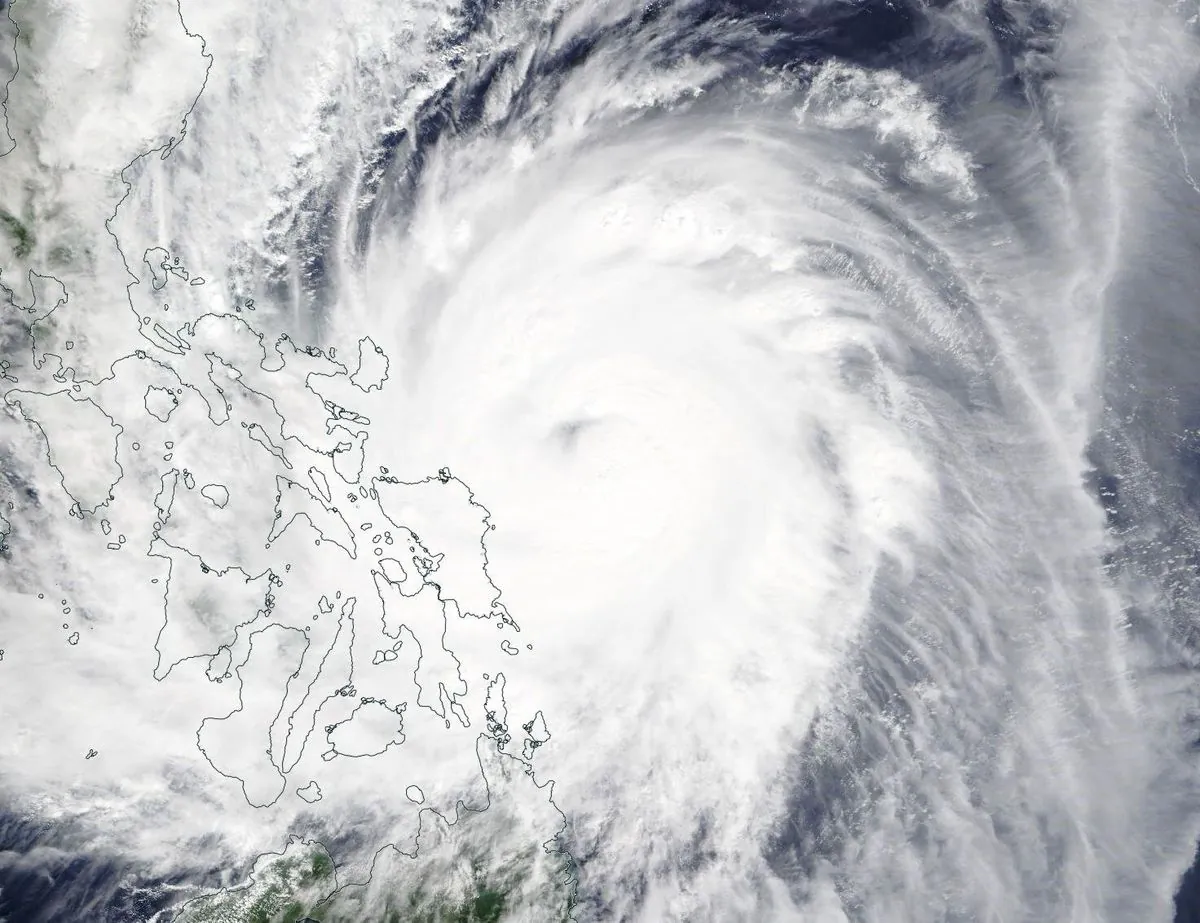As of September 30, 2024, Typhoon Krathon is unleashing its fury on the northernmost islands of the Philippines, prompting authorities to take swift action to protect residents. The storm, with sustained winds reaching 175 kph (109 mph) and gusts up to 215 kph (133 mph), is currently affecting the coastal waters of Balintang Island, situated off the provinces of Cagayan and Batanes.
The Philippine Atmospheric, Geophysical and Astronomical Services Administration (PAGASA) has issued warnings of potential "life-threatening storm surge" in coastal areas of Batanes, the Babuyan Islands, and Cagayan province over the next 48 hours. Officials caution that the typhoon's intense winds could cause significant damage to structures, vegetation, and agricultural lands.
In response to the impending threat, local authorities have implemented several precautionary measures:
- Evacuation of residents from coastal and flood-prone areas in Cagayan province
- Suspension of classes at all levels in several northern provinces
- Halting of sea voyages in affected regions
The Philippines, an archipelagic nation comprising 7,641 islands, is no stranger to tropical cyclones. On average, the country experiences about 20 such storms annually, with the period from June to December being the most active. Its location on the western edge of the Pacific Ocean and within the Pacific Ring of Fire makes it particularly vulnerable to various natural disasters.
As Typhoon Krathon slowly moves westward, forecasters predict it may intensify into a super typhoon – a classification reserved for tropical cyclones with maximum sustained winds of at least 240 km/h (150 mph). The storm is expected to veer northeastward towards Taiwan on October 1, 2024, potentially gaining strength as it travels over warm ocean waters.
The threat posed by Typhoon Krathon serves as a stark reminder of the Philippines' ongoing struggle with extreme weather events. In November 2013, Typhoon Haiyan, one of the strongest tropical cyclones ever recorded, devastated the central Philippines, claiming over 7,300 lives and displacing more than 5 million people.
Climate change is expected to exacerbate the intensity of tropical cyclones affecting the Philippines in the coming years. As a result, the country has been developing and implementing various disaster risk reduction and management strategies to better prepare for and mitigate the impacts of such events.
As Typhoon Krathon continues its path, authorities remain vigilant, closely monitoring the situation and urging residents to stay informed and follow evacuation orders when necessary. The coming days will be crucial in determining the full extent of the typhoon's impact on the northern Philippines and potentially neighboring regions.
"The situation is potentially very destructive to the community."
